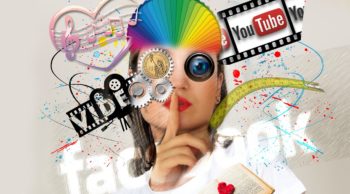5 Authentic Hindi Teaching Sources Posted by Nicole Herbert Dean on Aug 26, 2021 in Grammar, Hindi Language, Hinglish, Idioms, Pronunciation, Uncategorized
I learned Hindi the old fashioned way पुराने ज़माने का. In a classroom in India by a teacher who taught us using a blackboard and nothing else और कुछ नहीं. We took the notes down diligently however once we left the classroom we did not remember a thing in real life वास्तविक जीवन we had to use the vocabulary and phrases. So our parents hired private tutors निजी ट्यूटर make sense of the notes and then we spat out what we knew on the examination इंतिहान page.
So the time came when I desired इच्छित to know more about the language I grew up hearing outside my home. We spoke English in our home but had to know Hindi and Marathi to speak with the help, vendors, shopkeepers, rickshaw drivers etc. There is no better way to learn authentic language प्रामाणिक भाषा than being immersed in the culture. But what about if you cannot go overseas and be immersed?
In come the authentic materials that one can get their hands on today due to technology. Here are a few ways one can learn the language.
- Current news वर्तमान समाचार and events: The internet has spawned many online news sites. Top sites such as NDTV in Hindi. This has the country’s top news ranging from politics राजनीति, science विज्ञान, medicine दवा, culture संस्कृति, and international news. Another site which offers authentic content is Navbharat Times. It has sections for lifestyle, business व्यापार, sports, nation, education, astrology, tech and auto. To teach via articles, for beginners it can be a 200 word length article. Simple comprehension questions can work to elicit understanding. At the intermediate level a slightly longer length article is good with more abstract questions or multiple choice. And for advanced learners writing an opinion on the article is also good.
- Watching movies and short films is also a great way to learn the authentic language. For beginners and lower intermediate levels it is good to have the subtitles so the learner can make comparisons with what they have heard and what they see in the subtitles. Some suggestions in this category are music videos, film trailers, headlines, and TED talks.
- Audio clips too are valuable मूल्यवान but they should not be more than a few minutes long. Although audio materials for listening comprehension सुनना और समझना are preferable for intermediate to advanced levels of learners.
- Comics are wonderful sources for learning language too as it is visual दृश्य with the vocabulary. Language is much simpler and more authentic and casual in a comic book.
- In the same token, so are cartoons as animation actions are great companions to the vocabulary and phrases one hears in the cartoon. Cartoons and comics also bring out the cultural nuances of a certain culture.
Properly scaffolding the material with activities, questions, projects that elicit understanding is a great way to teach the student the language. At the lower levels vocabulary quizzes, games and visuals are important. But at the higher levels critical thinking and reasoning is encouraged by using debate, opinion pieces and blogs.

Build vocabulary, practice pronunciation, and more with Transparent Language Online. Available anytime, anywhere, on any device.




